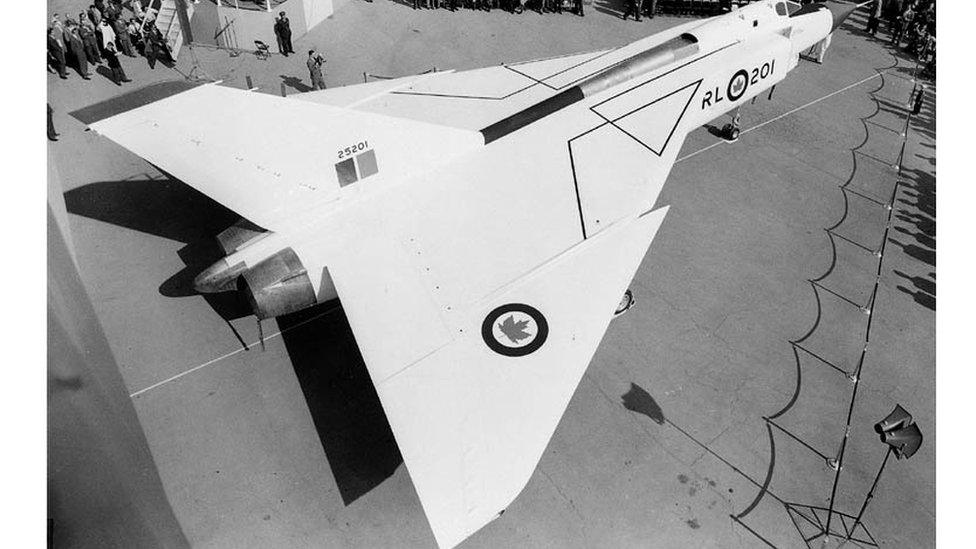'We found one': Searchers confirm Avro flight model discovery
- Published

The Avro Arrow
A Canadian search-and-recovery mission says it has successfully found a flight test model of a Cold War-era supersonic interceptor jet.
The "Raise the Arrow" project has been searching for free-flight models of the Avro Arrow in the depths of Lake Ontario since July.
Over 60 years ago, nine models were launched into the Great Lake to test their flight design.
Searchers are using advanced sonar technology in the underwater hunt.
The team behind the discovery released sonar imagery and underwater video footage on Friday of a model they recently found on the rocky lake bed, covered in zebra mussels.
The nose and one wing appear damaged.
Divers will be sent down on a "reconnaissance mission" soon to remove some of the mussels and debris and to try and to assess its integrity.
Proper archaeological examination, recording and preservation work is the next.
The 'high priority' target found in Lake Ontario
It will remain under water until it can be safely recovered.
The most recent hunt for the lost models first began around a year ago as the personal mission of John Burzynski, president of Osisko Mining.
He is also leading the OEX Recovery Group Inc, which is behind the "Raise the Arrow" project.
Mr Burzynski said on Friday the discovery is a small thing in the scope of global events.
But he said: "It wasn't just about finding something lost. For generations, Arrow's story has fascinated many of us and become something dear to many Canadians."
The Avro programme is a "story of a realisation of dreams, of accomplishment," he said.
The famed CF-105 Arrows were considered highly advanced when Canada abruptly cancelled the Avro programme on 20 February 1959, in part over cost concerns.
It is a decision that remains controversial to this day.
Over 30,000 employees and sub-contractors lost their jobs. A.V. Roe (Avro) Canada soon ceased operations.
The cancellation reverberated throughout the country's aerospace industry, causing a so-called "brain drain" of Canadian talent.
Many engineers went on to work in the US and UK, hired by companies like Lockheed and Boeing, and organisations like Nasa.
Recovered models will find new homes at the Canada Aviation and Space Museum and the National Air Force Museum of Canada.
The search is funded by a group of private mining and financial industry sponsors and will continue this year as long as conditions remain favourable.
- Published2 October 2014
- Published19 May 2017